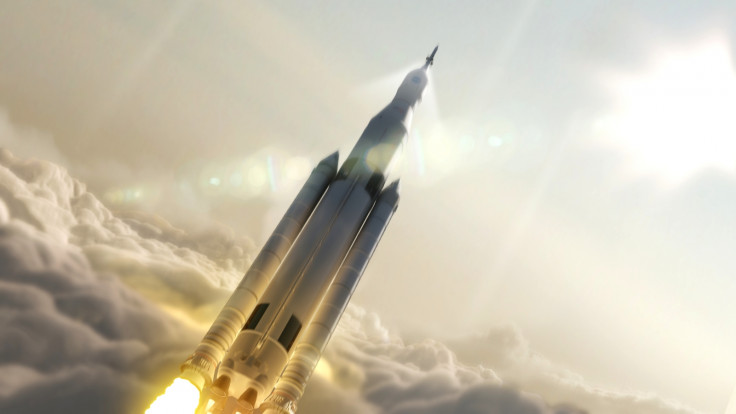Beam Me To Mars: 90,000 Hellos From Earth To Be Sent On Friday to Mark 50 Years of Exploration

Friday will see a 90,000 strong collective 'shout' from earth beamed to Mars using radio telescopes.
Along with its transmission partner, Universal Space Network, Uwingu will beam the messages it has received from the public so far to Mars shortly after 3 pm EST (2000 GMT) Friday at a rate of 1 million bits per second.
They will reach the Red Planet after a deep-space journey of about 15 minutes.
The Beam Me To Mars messages were charged a fee ranging from $4.95 for a name to $99 for a long message and an image. Submissions were open from August 19 through November 5.
Uwingu, a company founded by astronomers, planetary scientists, space educators, and former Nasa personnel, will use the money generated by the project to fund space science, exploration and education, writes Space.com.
The event is part of Uwingu's attempt to popularise space science and exploration and comes as a celebration to mark 50 years of Mars exploration.
It was on November 28, 1964 that Nasa launched the Mariner 4 spacecraft, which seven months later completed a historic flyby of Mars and returned the first close-up photos of an alien land taken from deep space.
Mars Exploration Saga
Approximately 40 minutes prior to closest approach on July 15, 1965, at a range of 9,845 kilometres, the television camera aboard Mariner began taking the first of 21 photographs.
It showed that the surface was pock-marked much like the moon.
Mariner 4's data indicated that the atmospheric pressure on the surface was quite low. The probe detected daytime surface temperatures of about minus 148 degrees Fahrenheit. A very weak radiation belt, about 0.1% that of the Earth's, was also discovered by Mariner 4.
The spacecraft outlasted its planned eight-month mission and stayed in its solar orbit, continuing long-term studies of the solar wind and making coordinated measurements with the Mariner 5 mission to Venus. Contact was lost on December 21, 1967.
Mariner 9 and Vikings followed and added to the Mars data generated by Mariner 4.
Since then orbiters and rovers have joined the melee on Mars, including probes from Europe and India, sending important data on the geology and chemistry of the planet. In fact, the rover Opportunity has completed 10 years on the planet, covering 42 kilometres.
The other rover Curiosity, which landed in 2012, is about to begin its climb up a destination mountain, doing soil drills and lab analysis of content before proceeding.
The latest is the orbiter Maven which is designed to sniff at the planet's upper atmosphere and study the contents. It was placed in an elliptical orbit around Mars this September.
The dreams of a space faring nation that Mariner 4 gave wings to now see Nasa's Orion spacecraft and Space Launch System all set to take on manned space missions in the coming decades.
© Copyright IBTimes 2025. All rights reserved.





















